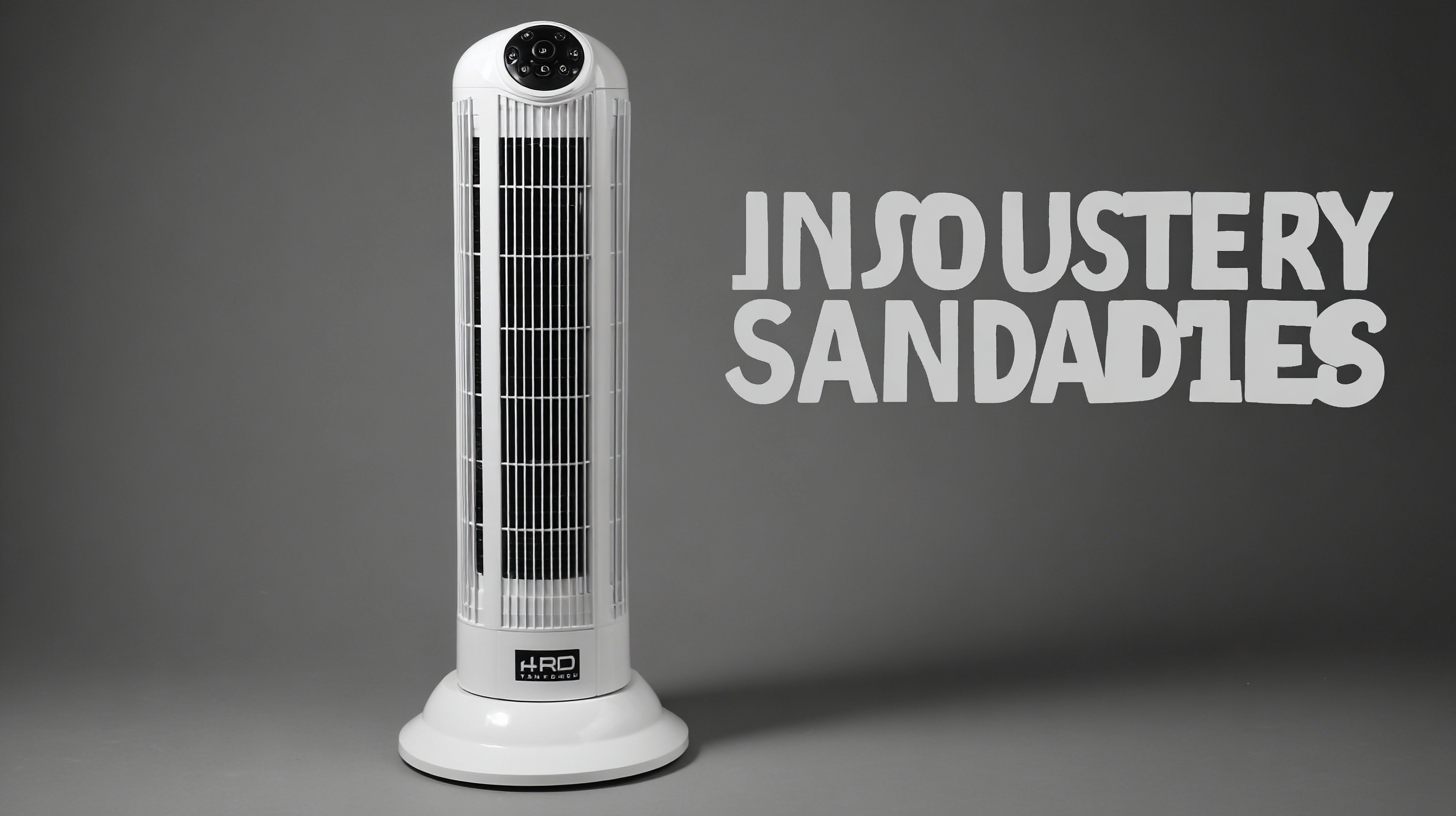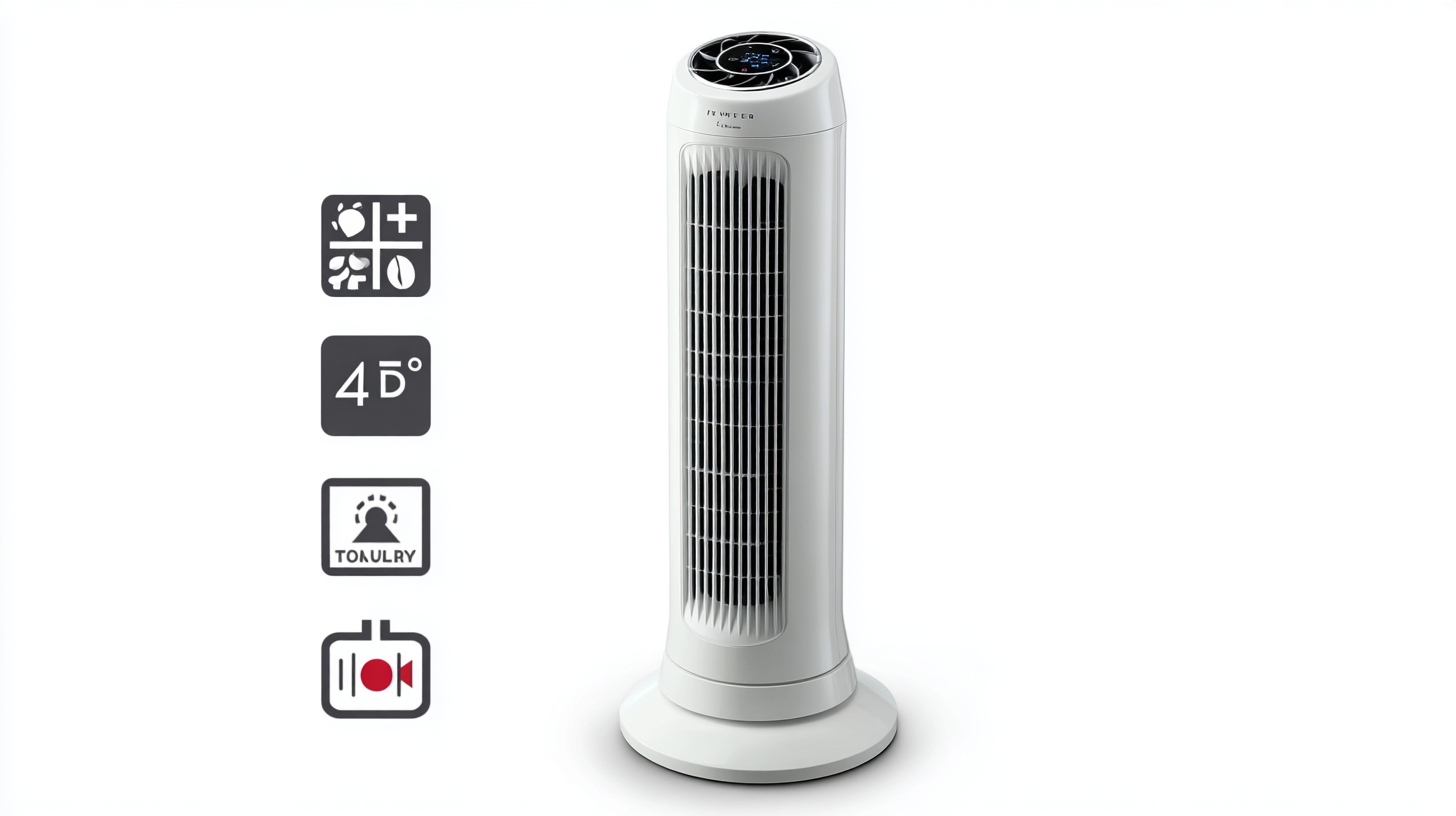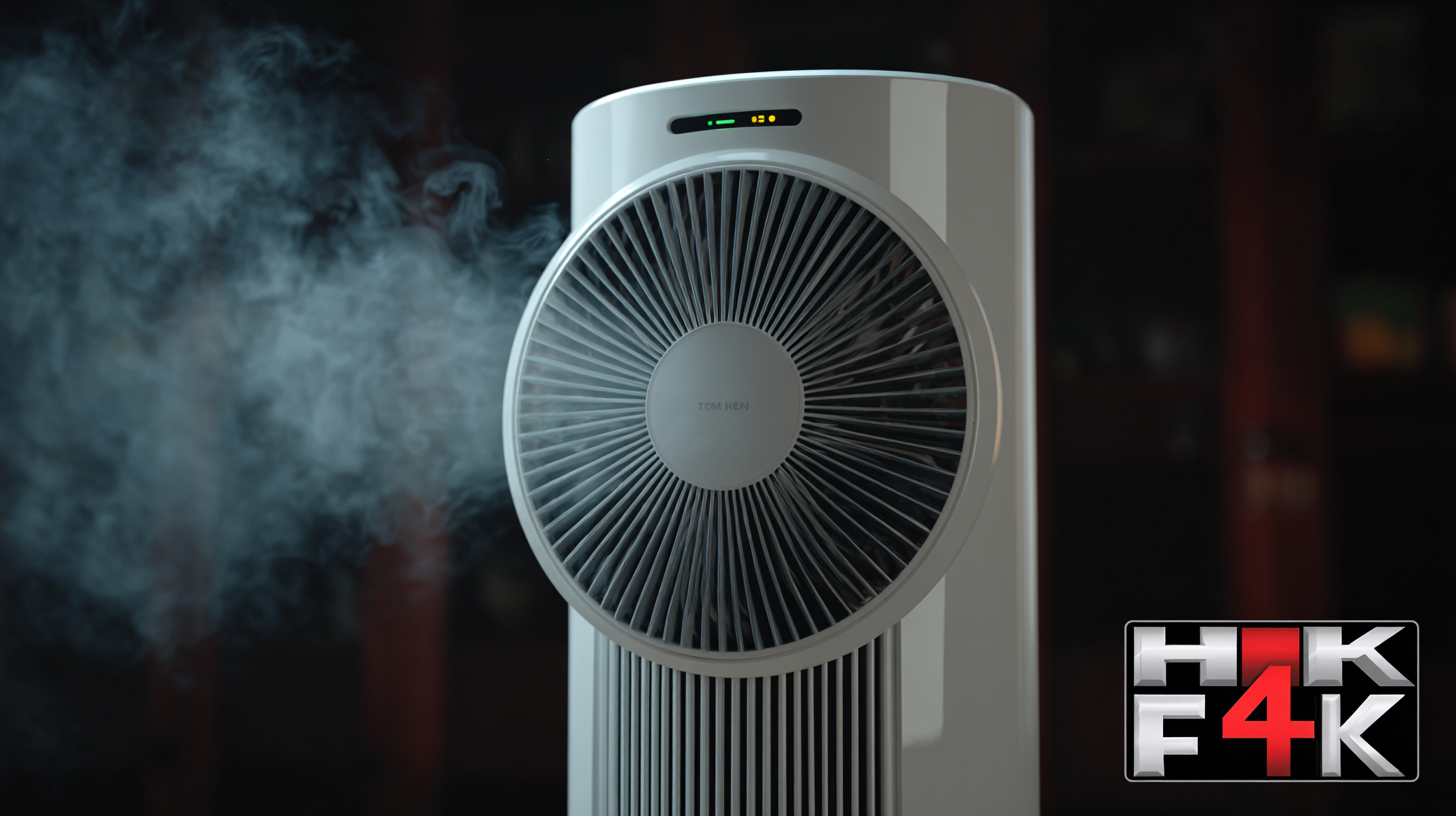
Understanding Industry Standards for Best Tower Fan Selection and Usage Guide
In recent years, the demand for effective cooling solutions has surged, with Tower Fans emerging as a popular choice among consumers seeking comfort in warmer climates. According to a recent market research report by MarketsandMarkets, the global fan market is projected to reach USD 10.25 billion by 2026, with Tower Fans accounting for a significant proportion due to their space-saving design and efficient airflow capabilities. These fans not only provide a refreshing breeze but also contribute to energy savings, making them an environmentally friendly option. Understanding the various industry standards and benefits associated with Tower Fans is crucial for consumers looking to enhance their indoor air quality and overall comfort. This guide will help you make informed decisions on the selection and usage of Tower Fans, ensuring you enjoy the full range of benefits they offer.

Choosing the Right Tower Fan: Essential Features to Consider
When selecting the right tower fan, it's crucial to consider several essential features that can significantly impact your comfort and energy efficiency. According to a recent report by the Consumer Product Safety Commission (CPSC), the airflow efficiency and noise level of tower fans are among the most important characteristics consumers look for. A fan with an airflow rating of at least 1,500 CFM (cubic feet per minute) is ideal for optimal cooling in larger rooms, ensuring that the air circulates effectively and maintains a comfortable environment.
Another critical feature is the fan’s oscillation capability. A study by the National Renewable Energy Laboratory (NREL) indicates that oscillating fans distribute air more evenly across the surroundings, which can enhance cooling efficiency by as much as 35%. Additionally, the inclusion of programmable timers and remote controls offers users greater convenience, allowing them to tailor their cooling experience to their specific needs. By evaluating these features, consumers can make informed decisions that ultimately enhance their comfort and maximize energy savings.
Understanding Industry Standards for Best Tower Fan Selection and Usage Guide - Choosing the Right Tower Fan: Essential Features to Consider
| Feature | Description | Importance Level | Average Price Range ($) |
|---|---|---|---|
| Fan Speed Settings | Multiple speed options for personalized comfort. | High | 30 - 150 |
| Oscillation | Ability to rotate for wider air distribution. | Medium | 25 - 120 |
| Noise Level | Operational sound measured in decibels; quieter fans preferred. | High | 40 - 200 |
| Remote Control | Provides convenience for adjusting settings from a distance. | Medium | 10 - 50 |
| Air Purification | Filters out allergens and improves air quality. | High | 50 - 200 |
| Energy Efficiency | Lower power consumption ratings mean lower electric bills. | High | 30 - 180 |
| Size & Design | Tower design maximizes space while offering aesthetic appeal. | Medium | 40 - 140 |
Evaluating Noise Levels and Energy Efficiency in Tower Fans
 When selecting a tower fan, two crucial factors to consider are noise levels and energy efficiency. Noise levels can significantly affect your comfort, especially if you intend to use the fan during nighttime or while working. Therefore, it is essential to look for fans equipped with noise-reduction technology, which can provide a quiet operation even at higher speeds. Many manufacturers now provide decibel ratings, allowing consumers to make an informed decision based on their noise preferences. Aim for tower fans that operate below 50 decibels for a peaceful environment.
When selecting a tower fan, two crucial factors to consider are noise levels and energy efficiency. Noise levels can significantly affect your comfort, especially if you intend to use the fan during nighttime or while working. Therefore, it is essential to look for fans equipped with noise-reduction technology, which can provide a quiet operation even at higher speeds. Many manufacturers now provide decibel ratings, allowing consumers to make an informed decision based on their noise preferences. Aim for tower fans that operate below 50 decibels for a peaceful environment.
In addition to noise, energy efficiency plays a vital role in determining the long-term costs of running a tower fan. Energy Star ratings can help identify fans that consume less power while maintaining optimal performance. Look for features such as programmable timers and eco modes, which allow fans to run only when needed, further reducing energy consumption. By evaluating both noise levels and energy efficiency, consumers can ensure they choose a tower fan that fits their lifestyle needs without compromising comfort or sustainability.
Best Practices for Operating Your Tower Fan Effectively
Selecting the right tower fan and using it effectively can significantly enhance your comfort during hot weather. According to recent studies, fans can increase perceived comfort by up to 5 degrees Fahrenheit, making them a crucial tool for those looking to cool their homes without relying on air conditioning. One of the most recommended models features straightforward functionality and an aesthetic design that seamlessly fits into various living spaces.

To operate your tower fan effectively, consider these tips:
- Create a cross-breeze by positioning your fan near a window to circulate fresh air. This method can improve airflow and keep rooms cool.
- Use a programmable timer. This allows the fan to run during peak heat hours and turn off when you don’t need it, thus saving energy.
- Ensure the fan is clean; a buildup of dust can hinder airflow, reducing efficiency.
With the right model and operating practices, your tower fan can be a powerful ally in maintaining a comfortable home environment throughout the warm season.
Maintaining and Cleaning Your Tower Fan for Longevity
Maintaining and cleaning your tower fan is essential for ensuring its longevity and efficient performance. According to a report from the Association of Home Appliance Manufacturers (AHAM), regular maintenance can enhance a fan’s airflow efficiency by up to 15%. Dust build-up can significantly affect the fan's motor and blades, leading to increased power consumption and noise levels. To keep your tower fan in optimal condition, it's recommended to clean the filters and the exterior at least once a month. This simple practice not only reduces allergens in the air but also prolongs the life of the fan by preventing overheating.
In addition, a study published by the Consumer Product Safety Commission (CPSC) highlighted that over 30% of malfunctioning fans were due to improper maintenance. Regularly checking for any signs of wear, such as frayed cords or loose components, can be crucial. Users should unplug the fan before cleaning to avoid any electrical hazards. Furthermore, using a damp cloth to wipe down the exterior and a soft brush for the vents can keep the fan running smoothly. By adopting these maintenance practices, you can ensure your tower fan remains a reliable source of comfort throughout the seasons.
Understanding Different Cooling Technologies in Tower Fans
When selecting a tower fan, understanding the various cooling technologies available is crucial for optimizing your indoor environment. Tower fans are designed to efficiently circulate air, providing a significant cooling effect while occupying minimal space compared to conventional fans. Many modern models utilize features such as oscillation, which helps distribute air evenly throughout a room, enhancing comfort during the sweltering summer months.
In 2025, the market has seen a surge in demand for energy-efficient and smart cooling systems, indicating a shift towards more sophisticated fan technologies. Consumers are now looking for added functionalities such as remote control capabilities and integrated air purifiers, which allow for a comprehensive approach to home climate control. With several top-rated options highlights, choosing a tower fan that combines efficiency, smart features, and user-friendly designs can help combat rising temperatures effectively while maintaining air quality.

